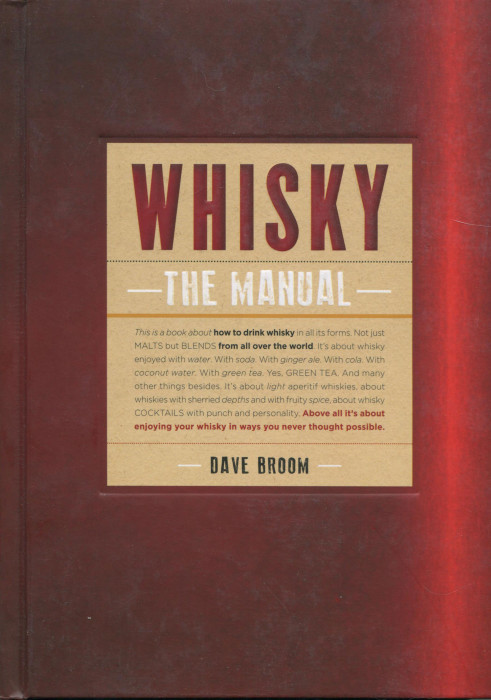I recently posted a review of Gin: The Manual by Dave Broom, a writer and mixologist of renown. I actually had the pleasure of hearing his expertise engagingly presented in his Scottish accent here in New York City. The loves gin and he can digress for hours on how these bottles compare with those. And why.
But, I know his first passion, his first love is whisky. In 2014 he published Whiskey: The Manual and it too is a drinker’s delight.
Whiskey begins with, what else, a chapter on myths. Myths like whisky should be drunk neat, single malts are best, and Scotland make the best. Demolishing that last myth brings relieve to millions of people in Ireland, Canada, the USA and Japan where distillers are earnestly working their craft.
Dave’s history chapter begins in 1200 and has the natural Scottish and Irish focus. But England, Canada, the USA, and Japan are not neglected. Whisky has appeal around the world, appeal mated with creativity that continues to expand one barrel at a time.
A chapter on Essentials deal with grains, smoke, water, yeast, copper, barrels and wood. The raw ingredients, the grain and the water and surely that yeast, are obvious factors that generate both a spectrum of flavors and wide conversation about “the best.” But it is the mechanics of whisky making that are equally important. How are the smoky notes introduced? How old is that copper and is it cleaned regularly or mellowed over decades or centuries. Ah, the barrels. You can have very intense discussions, or even an argument, about what wood to employ and how the individual boards are treated while being crafted into barrels.
Since Dave has demolished they myth of needing to drink neat, the importance of mixes arises. Dave shows his expertise in describing not only the possible mixes — water, soda, ginger ale, coke, green tea, coconut water — but also why they work. It’s a matter of sugar and spices and bubbles. Dave tells you the specifics of each mixer and makes your experimenting a much simpler task.
As a master mixologist, Dave taste tests. It’s a difficult job, but the man persists. Your liquor store shelves are laden with different brands and it can be very difficult to choose and buy. Dave has chapters for whisky by type — scotch blends, scotch malts, Irish whiskey, American, Canadian, Japanese and Taiwanese — where he presents his select choices. This book is called Whisky: The Manual precisely because you want to tote this along on your next shopping trip.
No book by Dave would be complete without cocktail recipes. Classics are here: The Manhattan, the Old-Fashioned, and Julep. There are old and forgotten treasures, like the Blood and Sand from 1930. And there are new ideas like the Paisley Patter with with grapefruit bitters, elderflower cordial, tarragon, soda, and lemon twist.
History, chemistry, best bottles, grand recipes — those are the contents of Whisky: The Manual. You’ll want to search for this book. It will satisfy your thirst for knowledge. And help with that other thirst, too.

